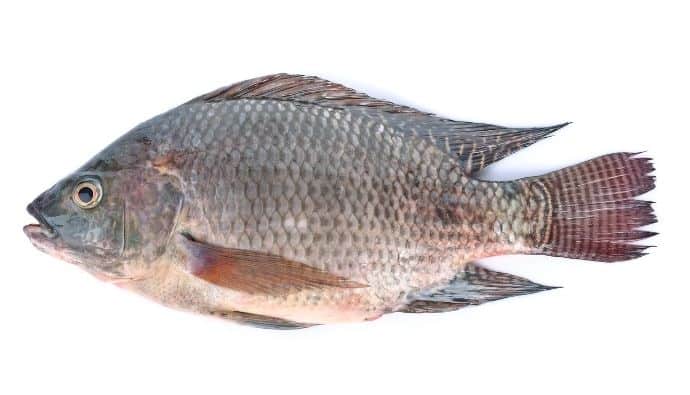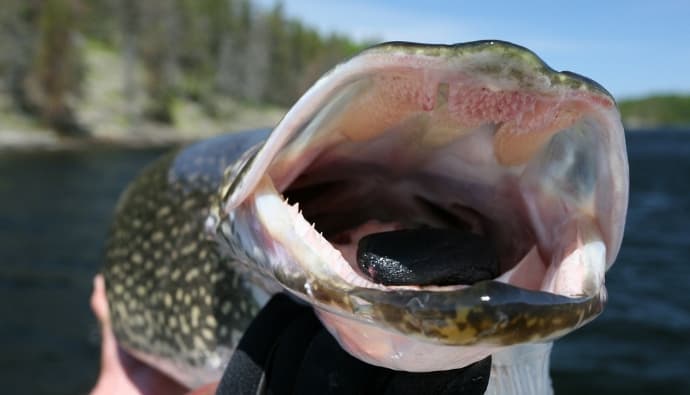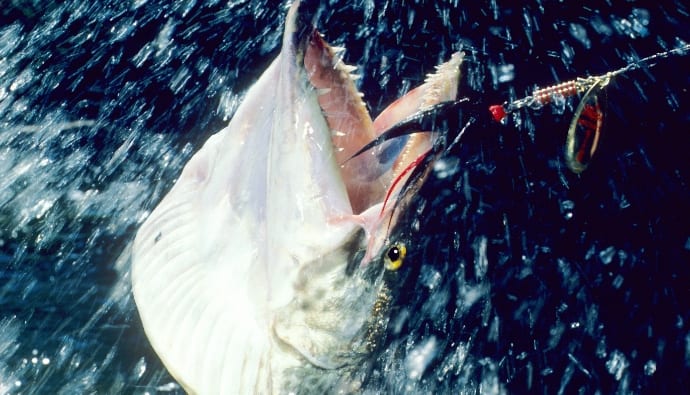Tilapia is a popular fish with a long-established history in the Middle East and Africa. Nowadays, you can find it in America’s Southeast, but tilapia fisheries are also present in many other countries.
Tilapia are notoriously tricky to catch because they’re often flighty. They’re also herbivores which means they’re not interested in baits.
Catching a tilapia can be a challenging feat, as they tend to be impulsive and herbivores who don’t easily take bait or lures. They are also often stocked in ponds for people to fish as they help control vegetation.
Here are some tips from seasoned tilapia anglers about where and how to catch tilapia fish. Let’s dive in!
Listen to more tips on the Cast & Spear Podcast

Tilapia At A Glance
Also known as ‘king of sunfish,’ tilapia is a common name for a hundred fish species. These fish are abundant, grow to a moderate size, and fight harder than largemouth bass.
Tilapia are fresh and from brackish waters, whose popularity among anglers rivals their popularity among chefs.
The tilapia is a common fish in the U.S. that is mild-tasting and easy to prepare, making it a staple of many commercial seafood suppliers.
Though native to the Middle East and Africa, these white-fleshed fruits are grown in the United States, including states with warm waters.
Spawning on Tilapia
Spawning Season
Catching tilapia during their spawning season is ideal for tilapia fishing for two reasons: territorial or hungry. Tilapia are territorial during their spawning period.
They will attack anything that passes over or through their spawning bed. They spawn for a long time and may not stop until the water temperatures drop, giving you plenty of time to catch tilapia.
Suitable Location
Tilapia spawns in shallow water, often with plenty of vegetation to provide cover from predators. It can be hard to miss when you see their spawning beds: they appear as craters covering the pond or river bottom.
But be careful of approaching their spawning beds too closely as tilapias are nervous fish and can be easily spooked.
Fish for Tilapia
As any angler knows, targeting a specific fish species is one of the essential fishing skills to learn. The key to any successful fishing experience is identifying what you are most interested in catching.
Fishing tilapia can sometimes be tricky to find and catch, as they can be easily spooked out. Targeting them can be fun and, at the same time, challenging.
Effective Baits for Tilapia
The tilapia diet is food from plants such as peas, corn, and bread balls. Bread balls are the most common bait that anglers use, as you can avail of it at the nearest grocery store.
Using this as bait can guarantee your success in tilapia fishing. However, they use artificial short lures that mimic small fish or small invertebrates to activate their territorial instincts. Please put it on a small hook, and there you go.
Using the Right Tackle
As tilapia are relatively small fish, light tackle is the appropriate tackle to use. Just use a 6 to 7 feet long pole, lightweight with a spinning reel.
Get the light tackle, tie the spinning reel with a 4 to 8-pound monofilament fishing line, and use a very small hook. Don’t forget to bring a few small floats for suspending your bait.
Fishing Spot for Tilapia
To fish for tilapia, you need to know their spawning location. It can help you to understand where you would plan to catch tilapia. Here are some sites where you can spot a tilapia fish.
- By state: Commonly, you can find tilapia in Florida, Alabama, and Texas.
- By water type: Tilapia often lives on brackish or fresh or shallow waters.
- By waterbody: Slow-moving waters like ponds, rivers, canals, and lakes or shallow waters.
- By season: The excellent time to fish tilapia is during their spawning season and will stop when the water temperature drops.
How to Catch Tilapia 101
In catching fish, you should know the different processes and tips. It can be pretty confusing if you are new to fishing, especially when your target fish are hard to catch. For tilapia, it is easier when you know basic knowledge about them than other fish.
Tilapias are popular because of their delicious white meat. It’s a tasty freshwater fish. If you want to go fishing, you should know the different fishing spots with brackish water or freshwater.
Catching tilapia requires patience since the said species are shy. Here’s the rule on how to catch tilapia.
Rule 1: Get A Fishing Permit or License
Some parts of America require anglers to get a permit or license first before fishing. By bringing these two, you could avoid having lawsuits, and paying fines and penalties. Or you can find a particular fishing spot with free public access.
Rule 2: Gear Up!
Understanding what to bring in your fishing trip aside from your fishing bucket and hat is essential.
You should first know the best baits or artificial lures that would guarantee you a bountiful catch, if you should use live baits, and what kind of tackle, fishing rod, small or large hook, before heading to the place where you would go fishing with your family or friends.
Rule 3: Knowing their Habitat
Knowing their habitat and their spawning season would bring you lots of caught tilapia. Fishing in the shallow water is the best location, as this is their particular spawning pool.
Be sure not to hit the spawning beds as tilapia are naturally anxious but territorial.
They will not bite your bait if they notice your presence. The popular time of fishing this type of fish is early sunrise.
Rule 4: Heads Up!
Knowing the correct posture is also essential when catching fish. We don’t want you to get a stiff neck, or back pain, or trigger your arthritis because of fishing.
Kidding aside, holding your rod can affect you and your caught fish. According to some experts who understand fishing, doing a downward sweep is more effective than holding it horizontally or vertically.
Rule 5: Gotcha!
So, you get your target fish caught for the day, game fish, or fish that you can cook. If you consult someone with expertise in catching game fish and other species, they recommend releasing it immediately.
Catching tilapia can balance the ecosystem. Tilapia eliminates other species present on that water, destroying the vegetation in ponds and rivers. Nonetheless, releasing the tilapia after capturing it is not recommended.
Harvest Time!
There are a lot of different things you can do to make your fishing experience more successful! To start with, you’ll want to figure out what type of fish you want to catch.
For example, when trying to catch tilapia, you should know their habitat, the correct posture for reeling one, and the best bait to use.
Nonetheless, learning how to catch a tilapia is truly a challenging but fun experience. So, ready your fishing gears up and explore the mighty waters tilapia spawns in!



 Facebook
Facebook YouTube
YouTube








